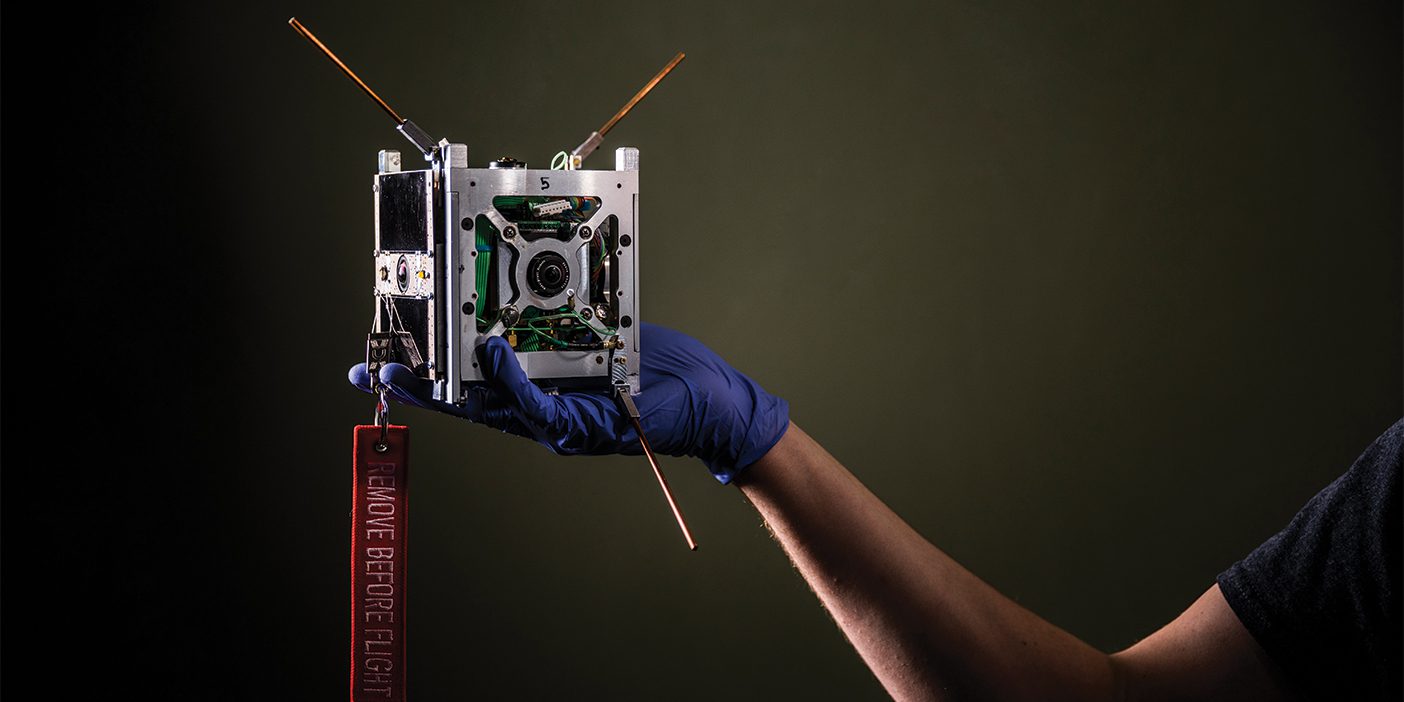
In a project spearheaded by the BYU Ira A. Fulton College of Engineering, more than 60 students from a variety of majors have spent the last five years creating the Passive Inspection CubeSat, a 10cm3 satellite designed to glide alongside and photograph in-orbit spacecraft. This NASA-sponsored “selfie space cam”—the first BYU satellite designed for launch—cheaply and safely monitors the condition of spacecraft. Two BYU CubeSats will launch along with eight from other universities as part of NASA’s ELaNa 20 mission.
Each CubeSat contains six solar panels, four battery boards, and a computing board.
25 cables connect the CubeSat—which is roughly four times the number found in most desktop computers, at a sixth of the size.
6 cameras, one on each face, capture images and video.
Three antennas transmit images and data to satellite dishes atop BYU’s Clyde Building.












